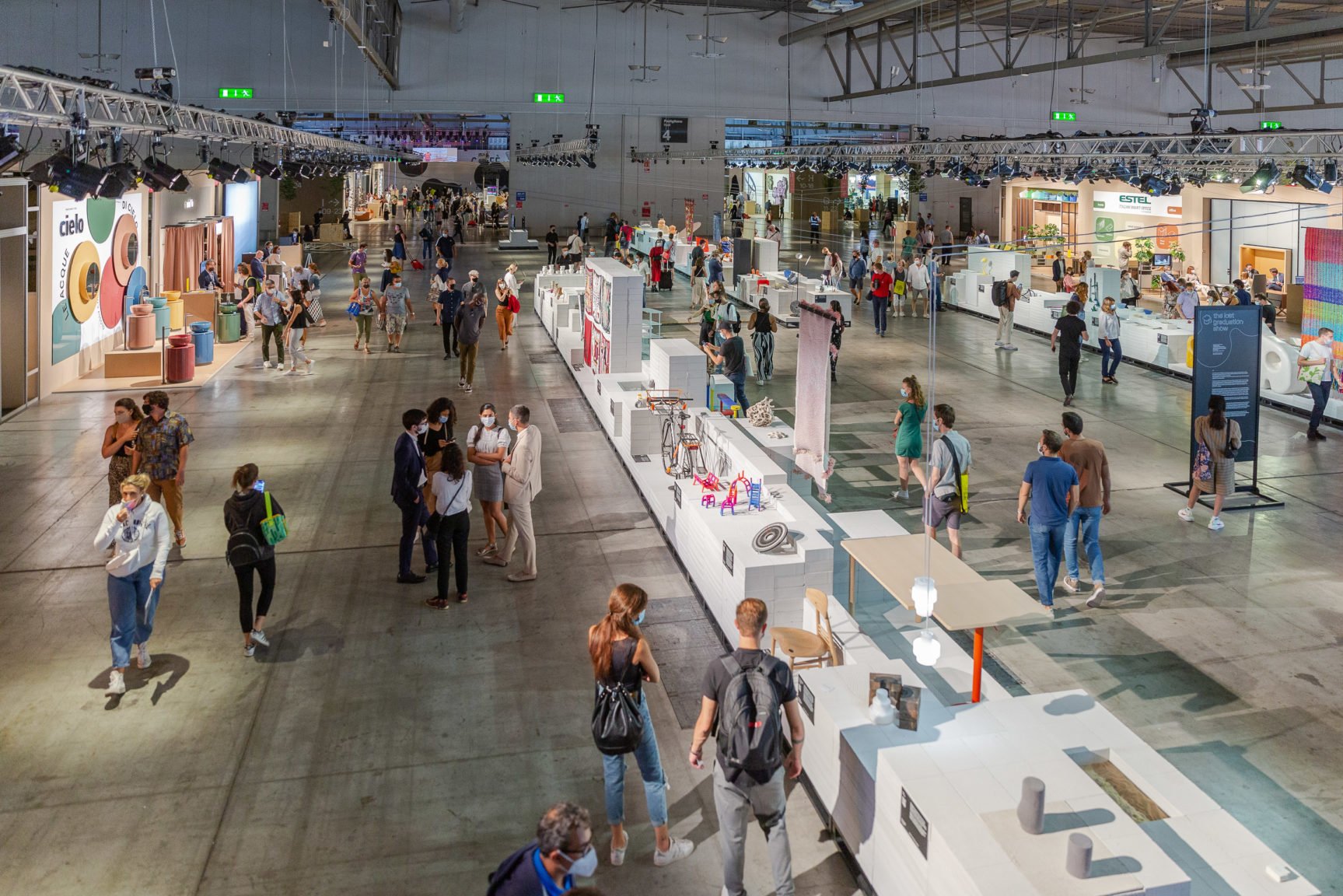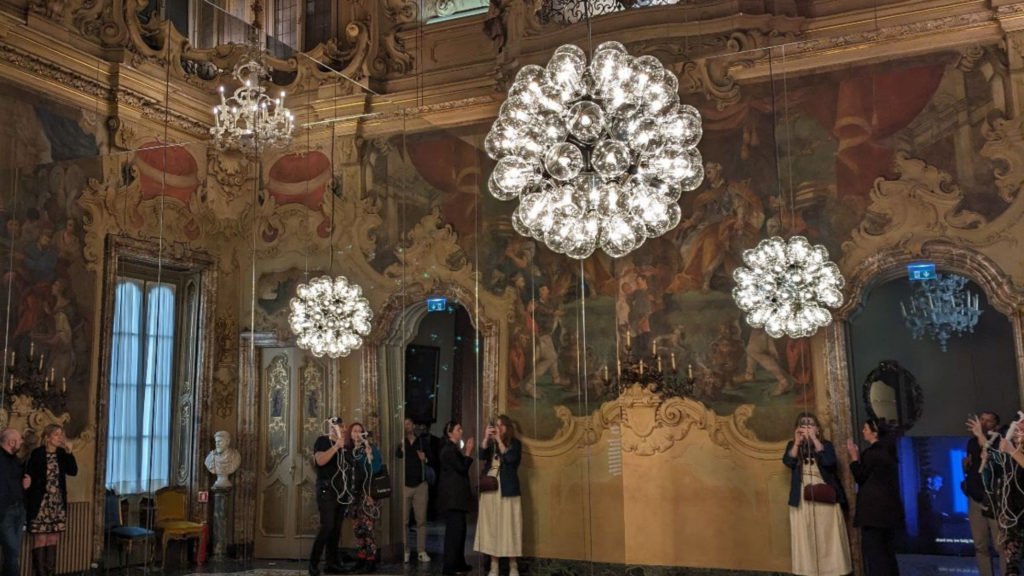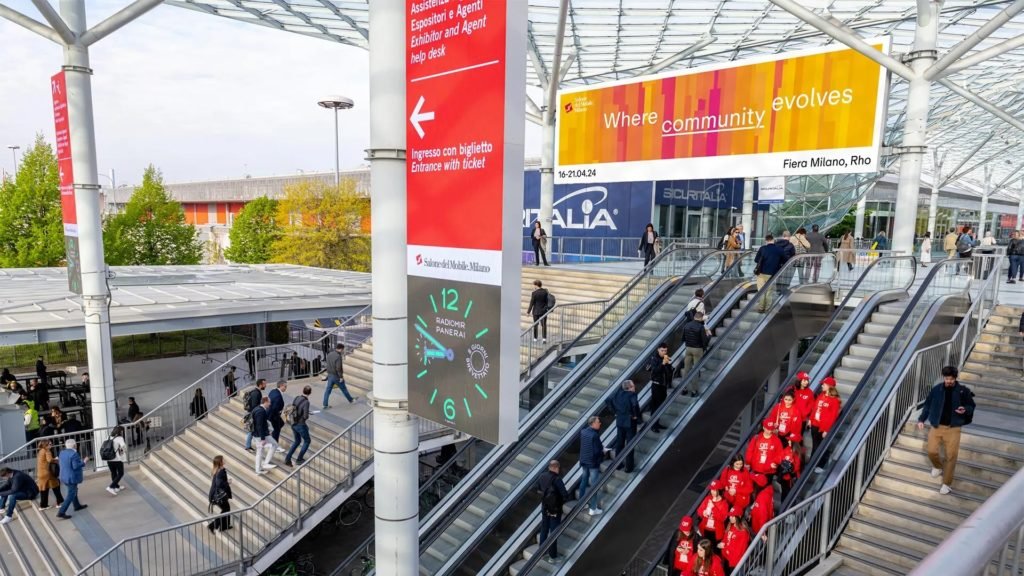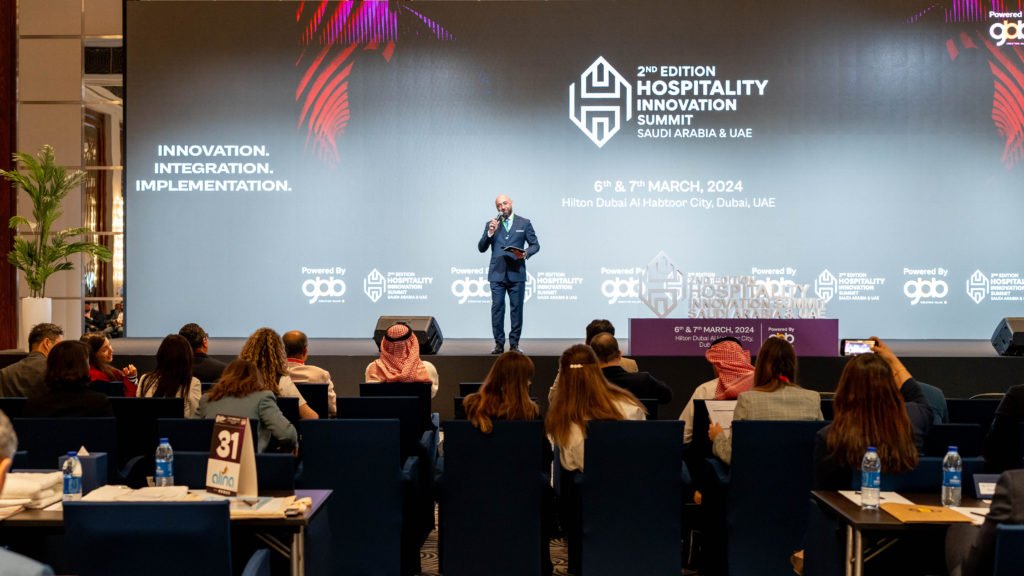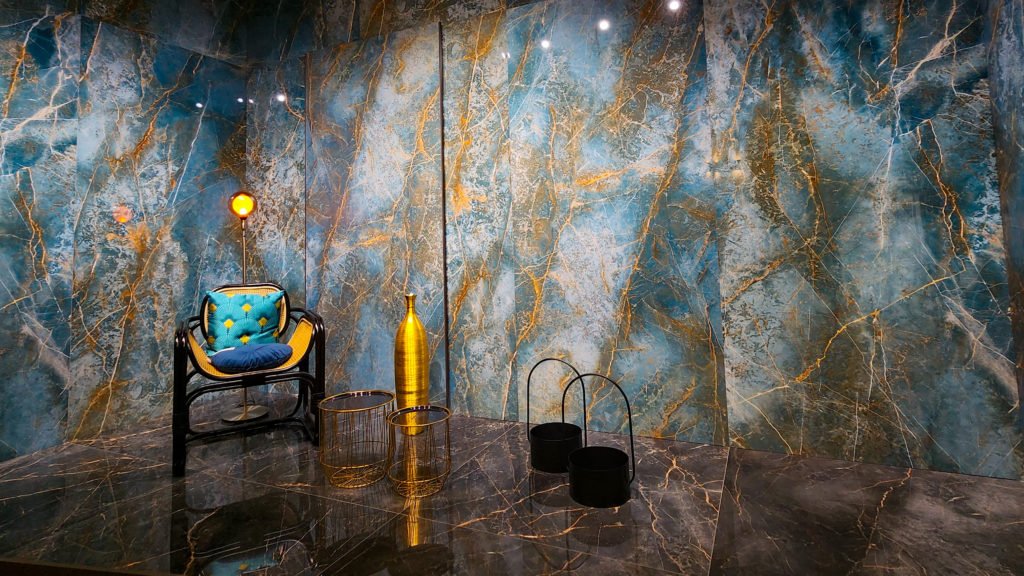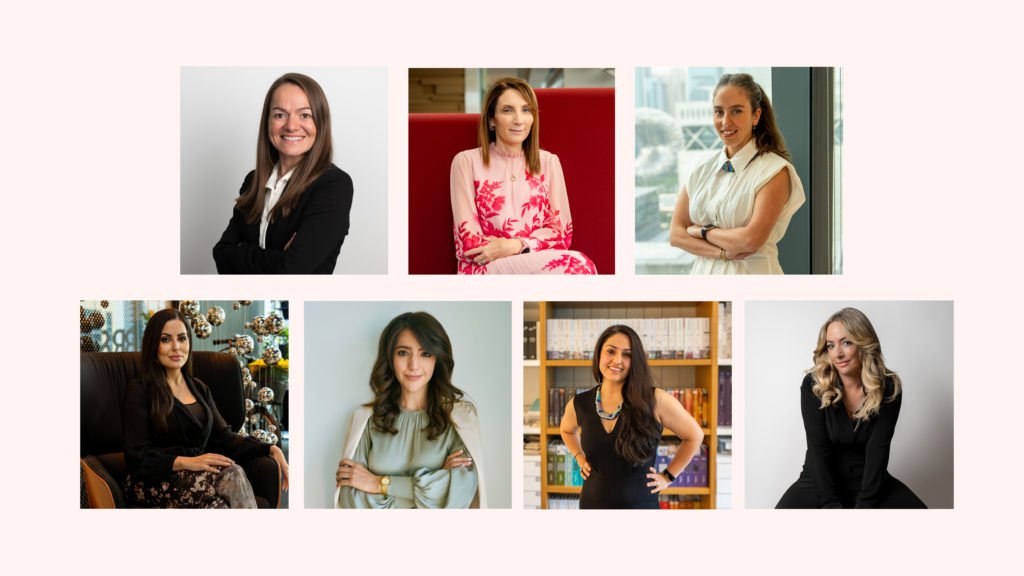The scope of this year’s massive ‘supersalone’ outshone the ones from previous years. More than 60,000 people attended and it truly was a super design event. As we covered the fair virtually, there was serious FOMO build up, as you too may experience from the event highlights and activities listed below.
All fair images courtesy Salone del Mobile.Milano and photographers Andrea Mariani, Diego Ravier, Francesco Rucci, Luca Orsi
‘supersalone’, the special 2021 Salone del Mobile.Milano event, showcased 425 brands, 16 percent of these were from countries other than Italy. Plus, the new Salone del Mobile.Milano digital platform further amplified the fair’s presence, with an uptake in visitors both physical and remote. Companies and products told their stories digitally, with information exchanged at a much larger scale, leading to a much greater networking arena.
Architect Stefano Boeri was elected to curate The Makers Show, which is dedicated to independent designers from around the world, showcasing the best of design experimentation with new production techniques and research into materials. This show provides a perfect overall snapshot of independent design and a comprehensive overview of diversity in the world of creative living. Some incredible work was at display here
The Lost Graduation Show was a huge hit with the public, drawing critical applause from the many designers and architects who visited the show, as was the packed public programme featuring 40 illustrious voices, including architects, innovators, visionaries, businesspeople, artists and politicians. Curated by Anniina Koivu, The Lost Graduation showcased 170 projects by students who graduated between 2020 and 2021. Almost 300 schools from 59 countries responded to the open call in early June, submitting design projects focussing on mobility, healthcare and sport, inclusive design, materials research and sustainability. The projects on display disclosed an in-depth understanding of the needs and desires of a society struggling to cope with troubling times. In a nutshell, the exhibition further propagated the ethos of design schools being safe-havens for disruptive ideas and inspiring responsible, intelligent and useful ideas for the present and the future. Needless to say, the exhibition was a huge hit!
Striving towards carbon neutrality
For the first time, Salone del Mobile.Milano has calculated and neutralised the environmental effects of one of its events, supersalone, to combat global warming and ramp up sustainability and decarbonisation measures. Studio Stefano Boeri Interiors planned the communal spaces and exhibition areas with a heavy sustainability focus to achieve carbon neutrality. The phases of offset calculation were carried out in partnership with Rete Clima and Inrete Green, two bodies that support the sustainable transformation of organisations, products and events.
This year’s supersalone has certainly set the stage for an even greater next edition at Salone del Mobile in Milan, taking place from 5th to 10th April 2022. We spoke to our partners who were present at the fair Here is a summary of their activities:
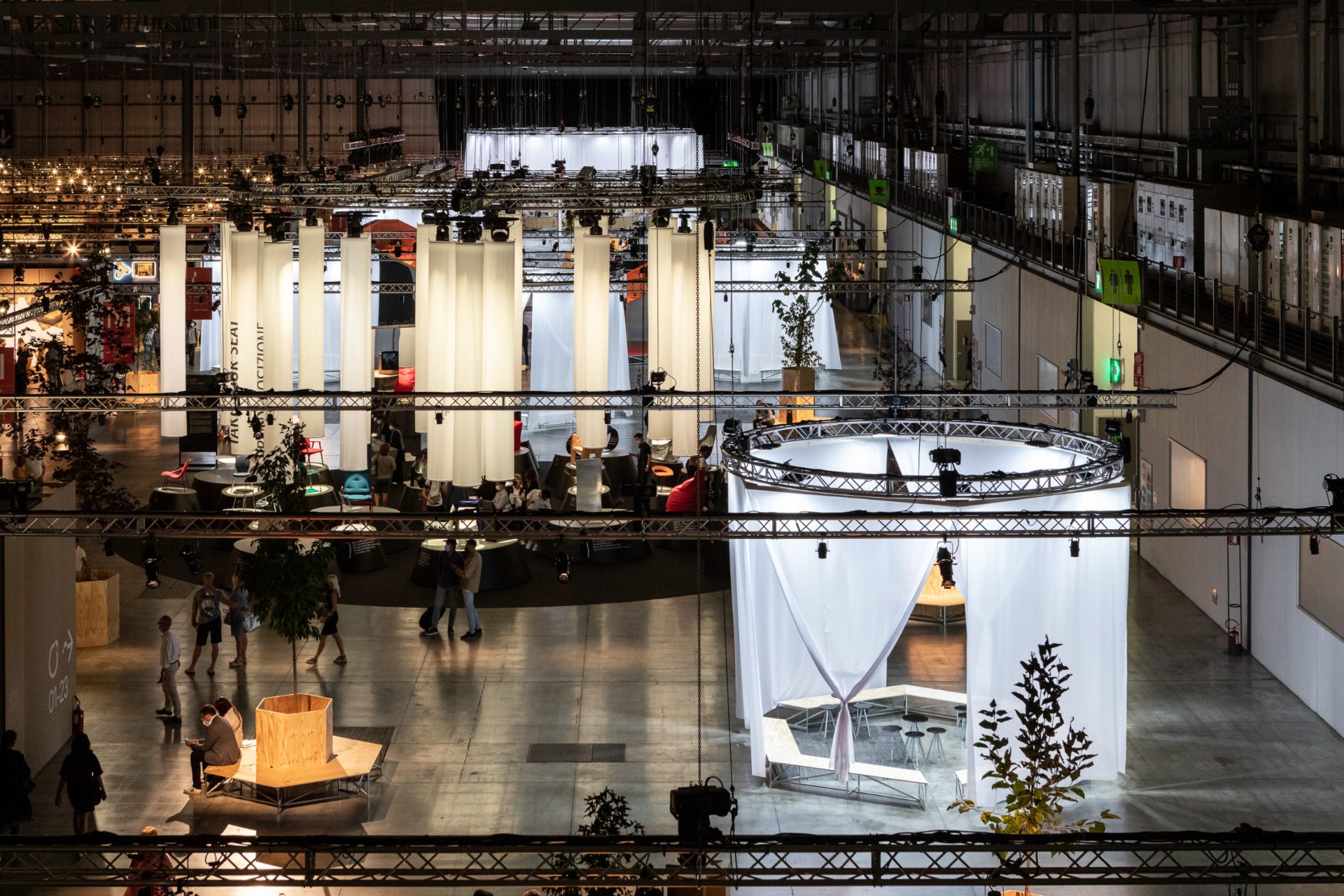
Arper
Arper’s stand at this year’s supersalone featured the theme (Re)new Together – a reflection on new ways of meeting and sharing spaces, and on the evolution of relationships between objects, people and the environment. The brand’s showroom in Milan simultaneously showcased their most recent sustainable collections: Mixu, designed in collaboration with Gensler, Kata by Altherr Désile Park, Kinesit Met by Lievore Altherr Molina and Aston Low Back by Jean-Marie Massaud.
The brand, always known for their stand out participation during fair days, hosted an exhibition in their pop-up space adjacent to the showroom. The exhibition, titled Lina Bo Bardi in Full Color was dedicated to the Italian-Brazilian architect Lina Bo Bardi, and the interpretations of colour expressed by different contributors in the making of the iconic Bardi’s Bowl Chair. Arper’s version of the iconic chair was showcased in their visual display and upholstered in two fabrics from historic Venetian fabric brand Rubelli.
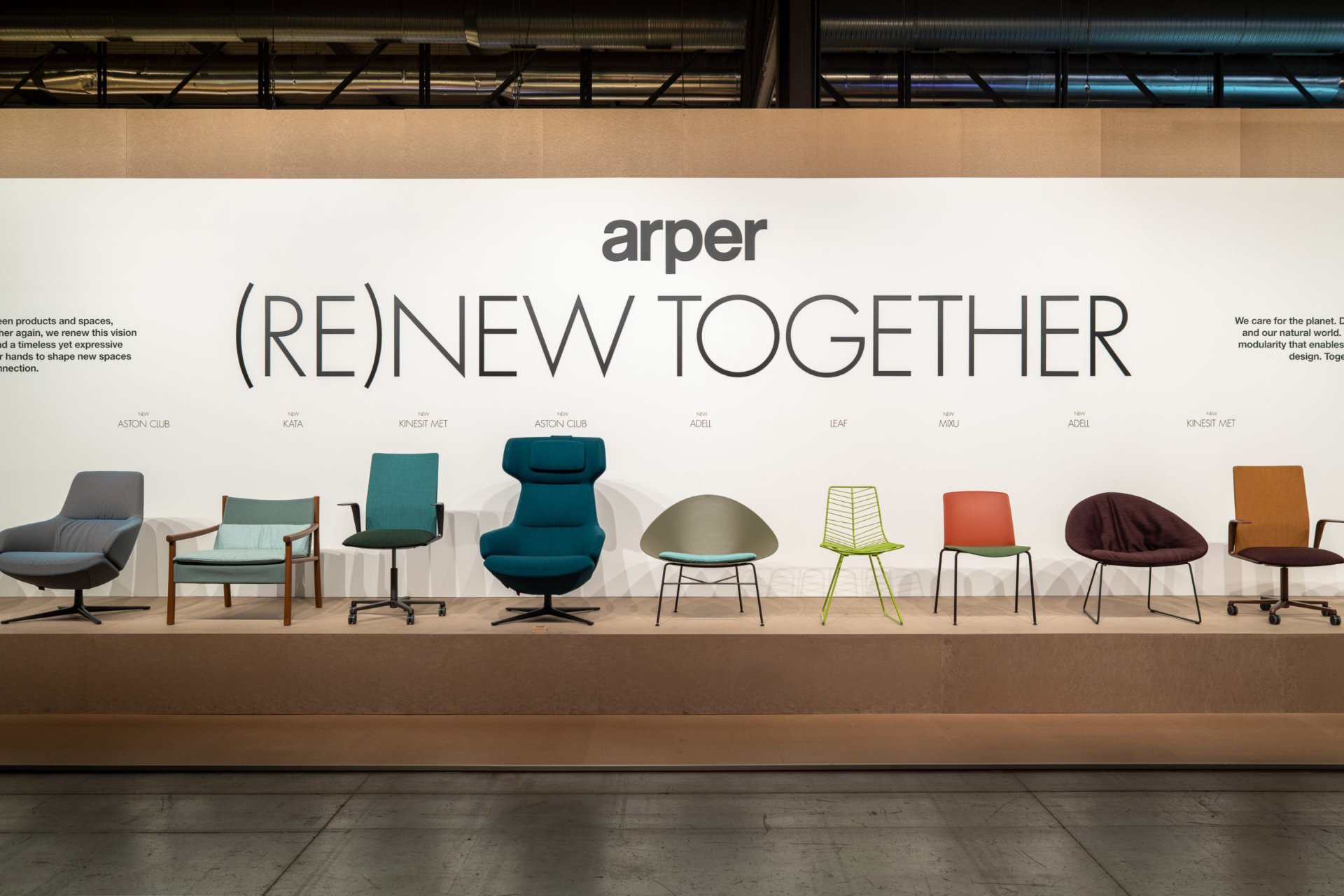
Kaldewei
Sanitary specialist Kaldewei presented their latest shower surface, the SUPERPLAN ZERO, made of recyclable steel enamel. The new shower surface is designed by Berlin designer Werner Aisslinger, who was also present at the Kaldewei stand and equally impressed with the brand’s participation at this year’s supersalone. Yvonne Piu, Director Global Marketing at Kaldewei said, “With the focus on sustainability and the circular economy as well as the Green Area at the East Gate, the supersalone is a perfect setting for us to present the SUPERPLAN ZERO to an international specialist audience.”
An artistic interpretation by Bryan Adams was also part of Kaldwei’s unique staging, and was shown exclusively at the fair before the launch of their global campaign. The Canadian rock musician has been an internationally sought-after photographer for over two decades now. Kaldewei is particularly pleased about the continuation of this collaboration, which began in 2020 with the staging of the Ming and Miena washbasin bowls.
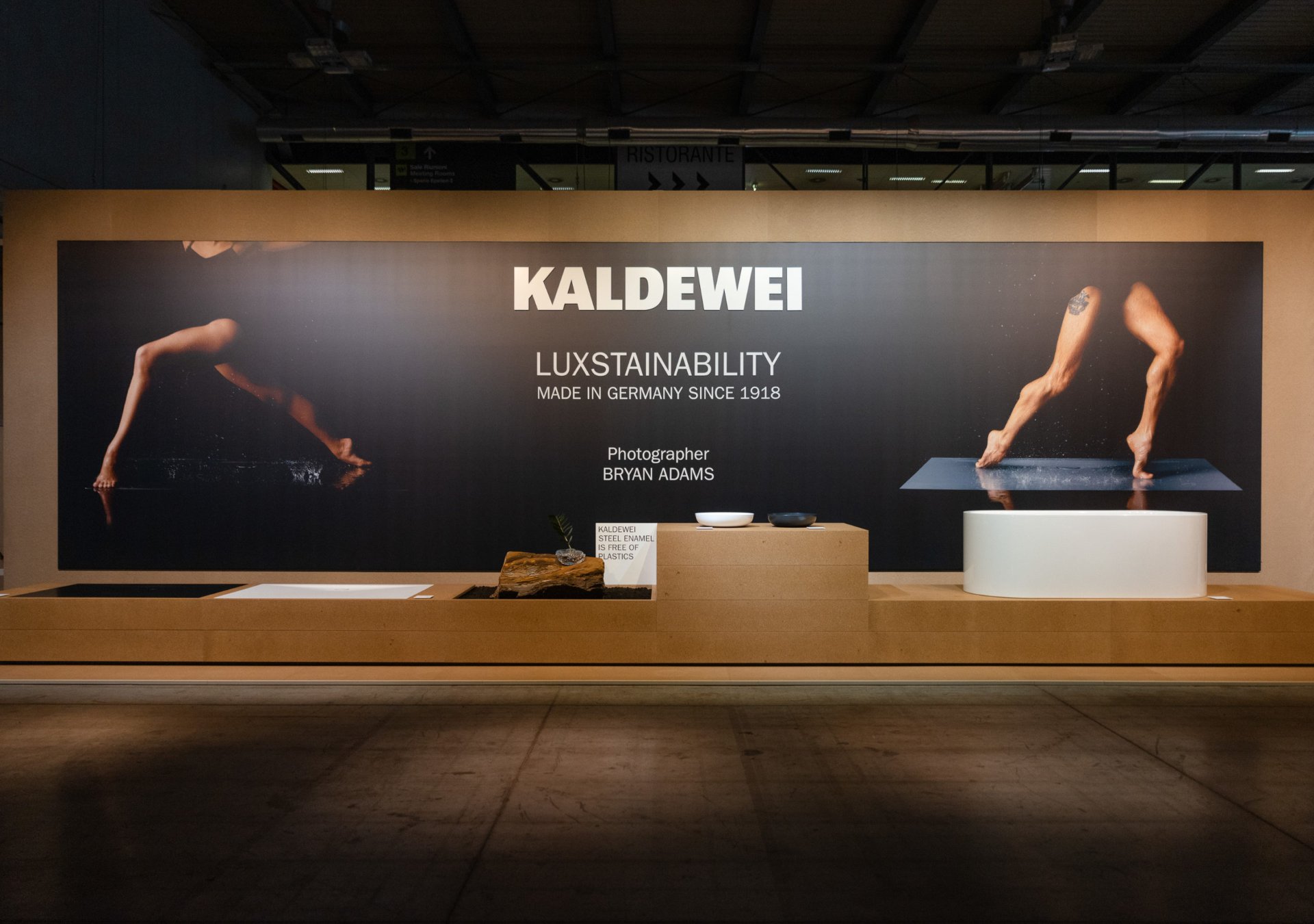
Giorgetti
The Italian brand celebrated this year’s design fair with multiple presences across the city – at the Atelier Serbelloni, the supersalone, and in store with new collections and some iconic pieces on display. However, their stand at supersalone really held attention.
Celebrating the brand’s 120th anniversary, a reflecting wall with the Giorgetti logo forms the background to an installation that mixes the physical experience typical of design objects and the emotional involvement of multimedia language. The iconic rocking chair, Move, designed by Raffaella Pugliatti, is presented in its entirety and then in a disassembled and suspended version that recounts the moment when the craftsmanship handed down through generations met contemporary technological research – this union defines the uniqueness and excellence of Giorgetti. The exhibition is completed by a composition of twelve high-definition screens, which seem to float in the void. Each video reveals an aspect of Giorgetti’s world, through the history of the brand and its collections, images of the production site, and stories from the designers who have worked with the company.
Andreu World
Andreu World gave its first preview of circular designs for 2021, titled Together Again. The brand has a noble goal of achieving a carbon neutral footprint and a circular economy by 2025. The exhibition concept was based on Stefano Boeri’s design to create two 100% sustainable spaces. The first was dedicated to the Adela Rex collection, presented by Philippe Starck. This 100% wood design is Andreu World’s first collaboration with French designer Philippe Starck, and part of the 100% pure wood project, which brings together seats and tables, created in part or entirely with selected, slow-growing wood from reforested forests that are harvested from the company’s own lands. In many cases the pieces are made without using any component of any other material. All components are easily separable and recyclable.
The second space was dedicated to the Nuez Lounge BIO® lounge chair, designed by Patricia Urquiola, which was launched for the first time at an international event. For its design, the brand developed a new bioplastic, and the chair maintains its wraparound character, featuring a high backrest, and displaying the technological complexity of its shell. This piece, too, is 100% sustainable, upholstered with their new Circular ONE® fabric made from PET bottle plastics and textile waste. The Nuez Lounge BIO® is probably one of the most environmentally friendly upholstered seats ever designed. It heralds a new path towards sustainability within the parameters of the circular economy of materials.
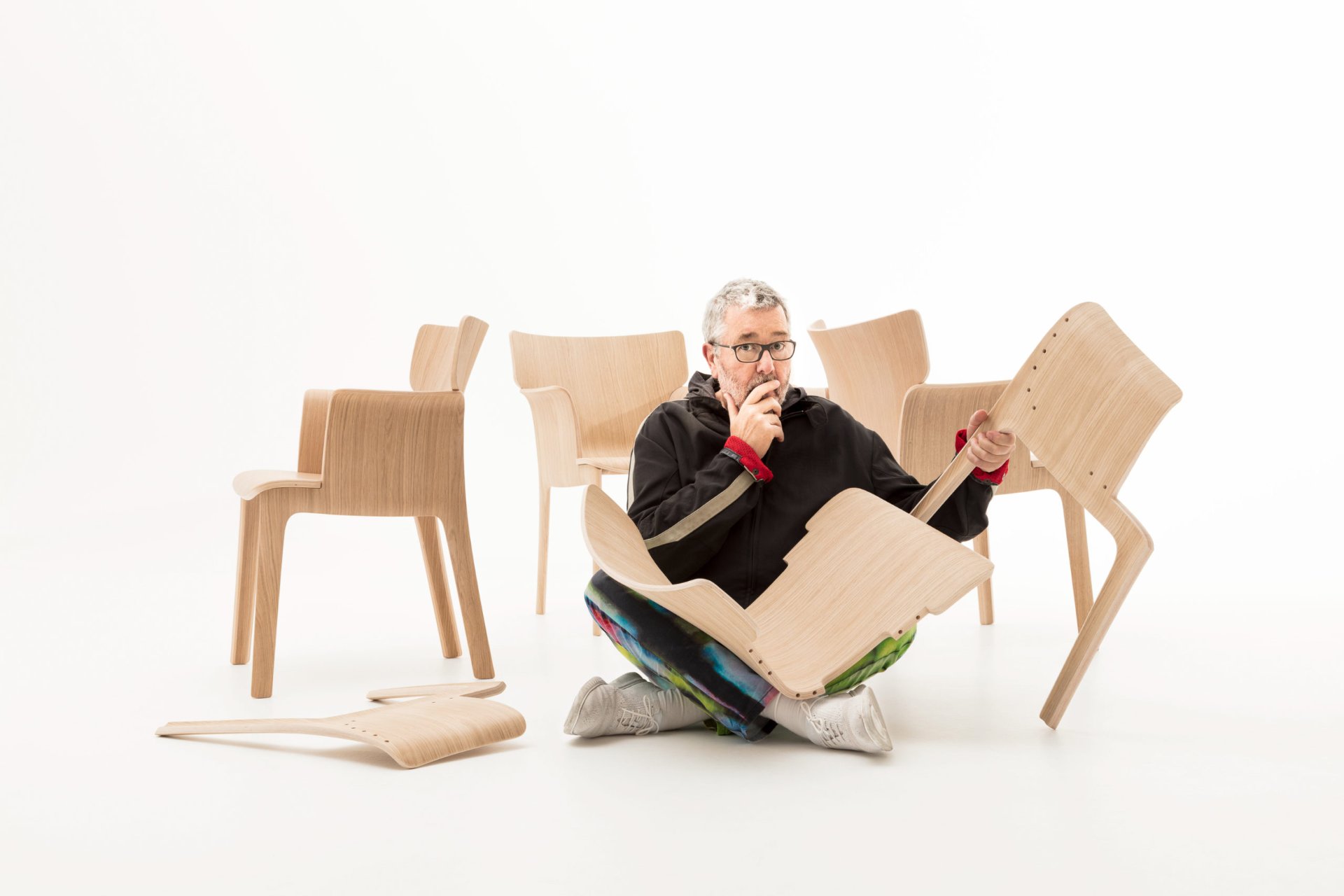
Martex
‘We dedicate our day to making people feel good in the office, like a home.’
This is the motivation that drives Martex to design and manufacture products for the spaces where we spend most of our time, and where professional and domestic are never totally separate. The goal of the brand is to design products and workspaces keeping in mind the psychophysical wellbeing of the people that use them. This year, at Salone, Martex launched Biblos, a modular bookshelf consisting of an aluminum frame to which shelves, backs, drawers, doors, flower boxes, cushions, and TV compartments can be added. It is totally customisable, making each library unique and original – a single product that allows you to obtain different compositions, be it a bench, a partition bookcase, a ceiling bookcase, and more.
This bookcase is perfect for your office but also equally elegant and versatile in the home, a place to store books but also a space to integrate a table or armchairs, becoming a relaxing space for reading, eating or watching TV, work and study.
Kvadrat
The Salone del Mobile 2021 marked the opening of Kvadrat’s third residential showroom. Redesigned by Vincent Van Duysen Architects, the concept was inspired by library spaces, conveying a sense of warmth and comfort. The focal exhibition in this space, Storylines, explores intervals between texture, pattern and colour, imagining the thread as the line, yarn as the syntax and textile as the story. When viewed from inside a space, lines emerge from the curtains as sculptural drapes, cascading stripes, and vibrant pleats.
The new textile and rug collection by Peter Saville, Technicolour, is quite craft-orientated and sculptural, and translates the industrial processes in textile production. The name relates to the spectrum of bold hues commonly used to mark flocks of sheep that are spectacularly incongruous in pastoral settings. “The collection brings the industry of the land, in raw form, into the living environment,” says Saville. “The elements offer an experience of texture and colour, ranging from the expressionistic to the subliminal.”
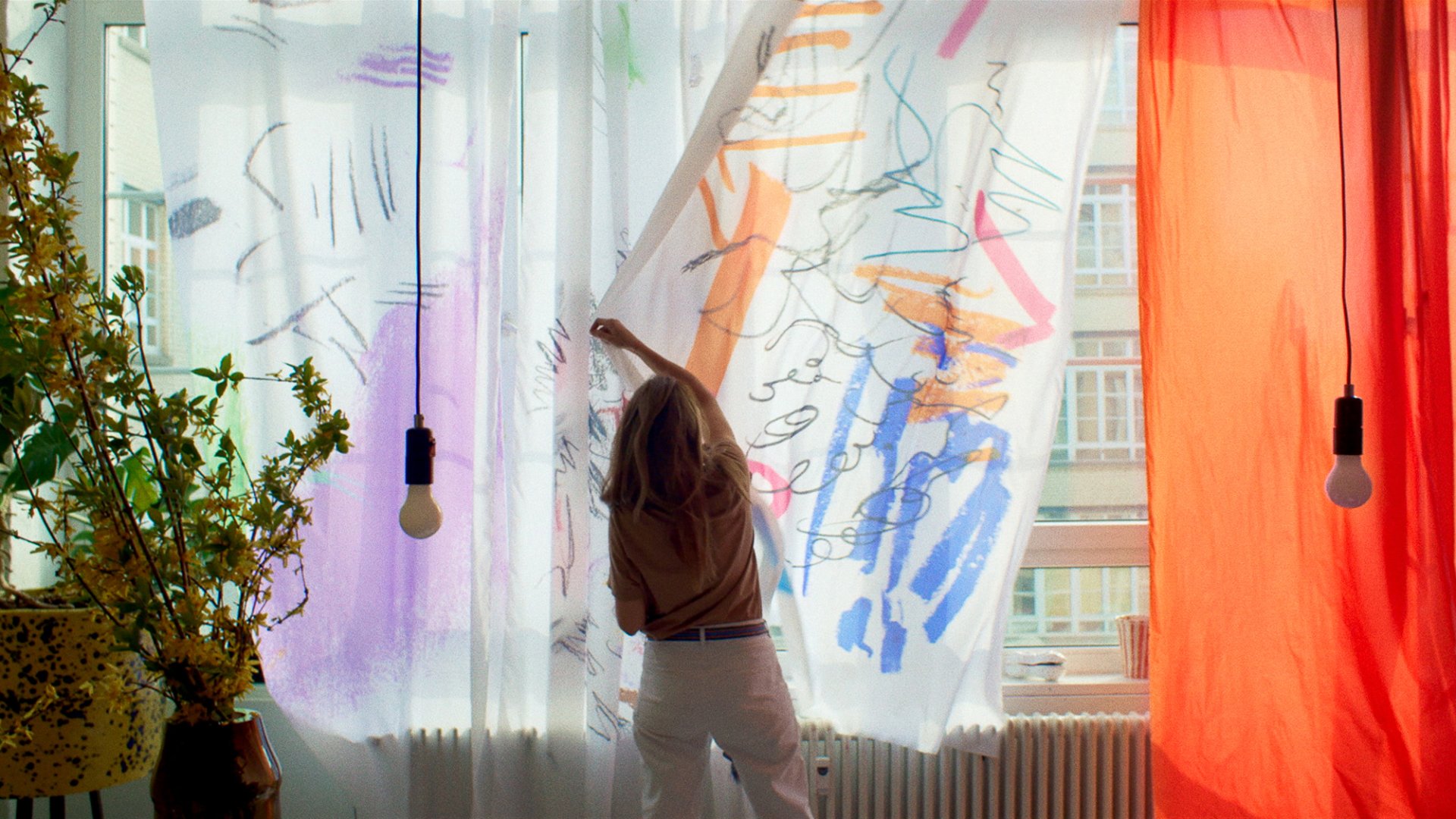
Caimi
This year, Caimi presented two new additions to its iconic Socrate outdoor system designed by Mario Trimarchi and Caimi Lab, supersalone. These additions have been designed with contemporary lifestyles in mind, offering new solutions from an aesthetic and acoustic point of view. Snowgems, designed by (a+b) Dominoni, Quaquaro, is a system made up of variously shaped Snowsound sound-absorbing panels that can be strung together and fitted into various different structures. Each Snowgem modulates the sound reverberations in a room while also bringing about a calming effect. Snowpouf, designed by Paola Navone, is an easy-to-carry pouf covered with Snowsound Fiber, a special Caimi-patented, sound-absorbing fabric. Its barrel form is reminiscent of a Chinese drum but, rather than emitting sound, the Snowpouf enhances the sounds already present in the room, thus increasing the level of acoustic comfort.
The brand also participated in Superstudio Più, curated by Giulio Cappellini, that relays the last 20 years of design through emblematic projects, showcasing a journey of iconic objects over the years. Caimi’s contribution was Alberto and Francesco Meda designed ‘Flat’, based on Snowsound acoustic panels that embed a technology, offering an entirely new look to the world of sound absorption. Also on display were the Ulisse chairs, modular sheet plate pieces of furniture that were a landmark product for the company.
Moroso
At supersalone, Moroso unveiled a project by Olafur Eliasson titled ‘Secret Cubic Shelves’, a design borne from his installation, ‘Green Light – An artistic workshop’, at the 57th International Art Exhibition, the Venice Biennale in 2017. Secret Cubic Shelves is built around a rhomboid-shaped, negative space, delineated by modules that are based on the geometry of the golden triangle. In this new edition, the product is made entirely of iron (recycled and recyclable), with non-toxic powder coating and durability that guarantees lesser wastage of resources, raw materials and energy, thus having a lower environmental impact.
Meanwhile, the brand’s showroom was revamped with a new installation curated by Marco Viola using the Salon Nanà Collection, the result of their new collaboration between French-Lebanese designer and architect Annabel Karim Kassar and Moroso. The collection referenced atmospheres akin to those found in literary circles of the late 19th century (the name was inspired by the book, Nana, by Emile Zola. The collection comprises of a flexible modular sofa system and side tables inspired by Moroccan traditions. The ground floor showcased Patricia Urquiola’s Pacific sofa and armchairs with their rounded and oversized forms, giving a relaxed and laid back vibe of the American West Coast. Swiss/Argentine designer, Alfredo Haberli, exhibited the Taba collection, a family of products created for multifunctionality, i.e. living, sitting, conversing, working. The concept and forms emulate the taba, a cow’s bone specially carved and used in a game in rural Argentina. Diesel Living’s collaboration with Moroso featured two new pieces, the Cloudscape sofa, characterised by large cushions, and the clean-lined Mecano Shelving System, which can be installed on the wall or ceiling, thus becoming a versatile partition within a space.
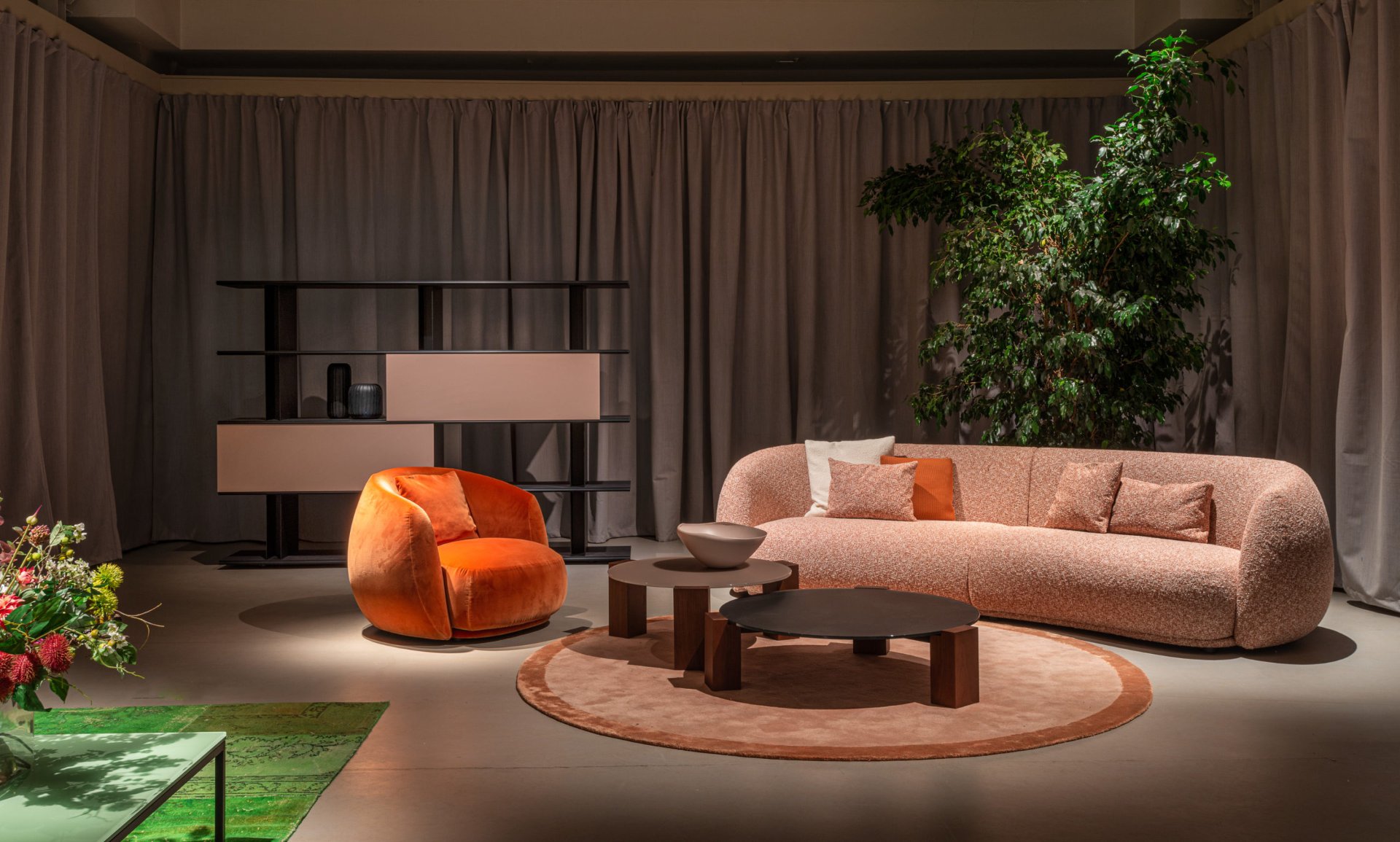
Pedrali
Italian, family owned brand Pedrali showcased created a contemporary installation at Salone titled #Pedralitimeless. Designed by the Milanese firm Calvi Brambilla, the stand was converted into a fluid, dynamic exhibition relaying the story of the brand through its values and its collections. The installation was based on the concept of ‘Wunderkammer’, or Cabinet of Curiosities, and featured timeless images, objects and products tracing the history of the brand over the years,
This story was presented in five settings, from office furniture and the home office to hospitality and residential and even outdoor. At the heart of the narrative is sustainability. Committed to the environmental cause, Pedrali launched the first collections made entirely of recycled plastic – a new material made from post-consumer waste and industrial waste in equal measures. Moreover, the brand’s wood collections are FSC® C114358 certified, attesting to the use of wood sourced from responsibly and adequately managed forests, and painted with water-based paints composed mainly of plant-derived resins.

